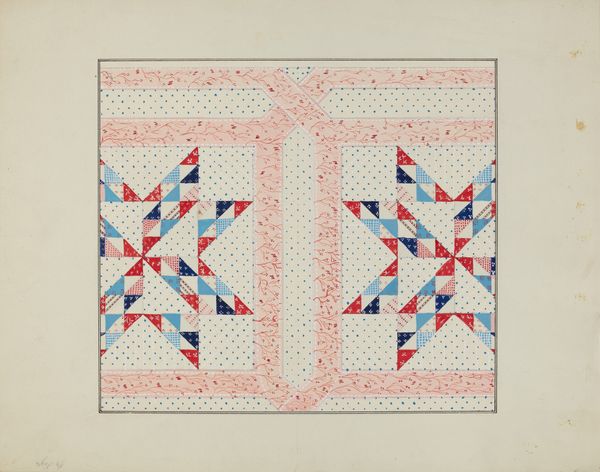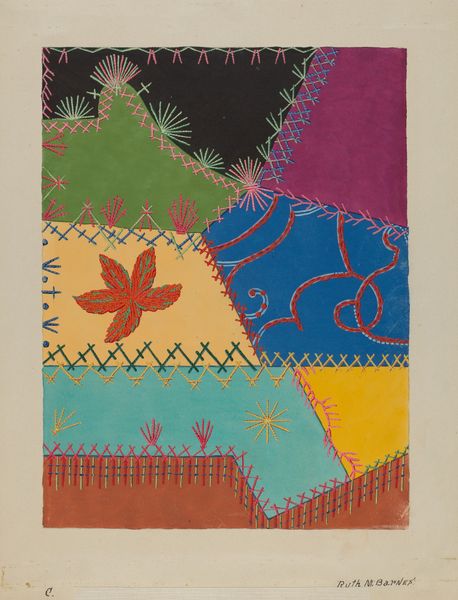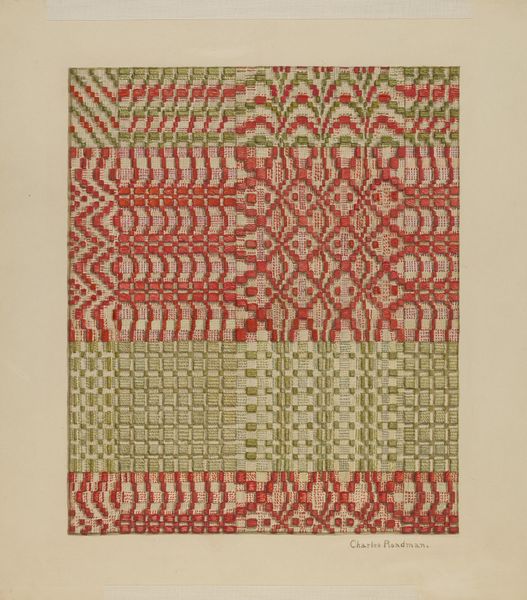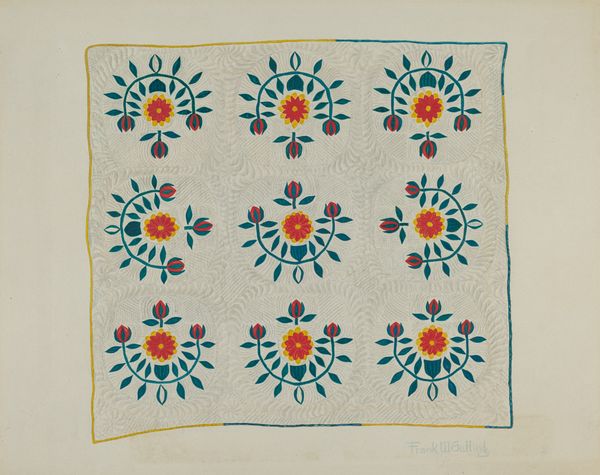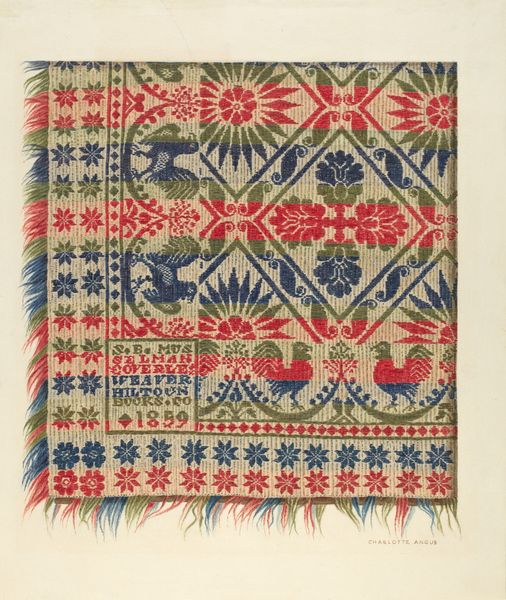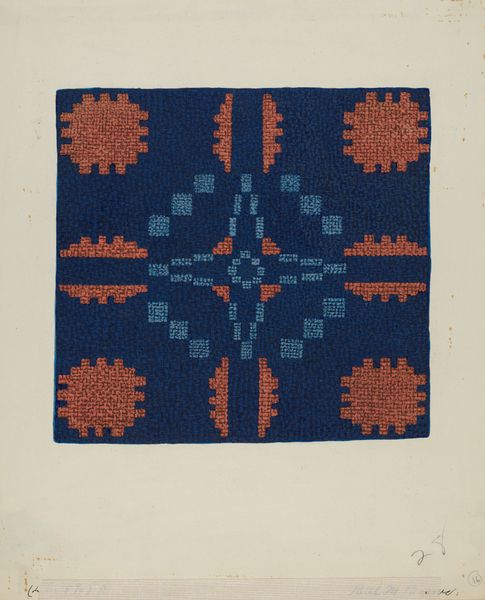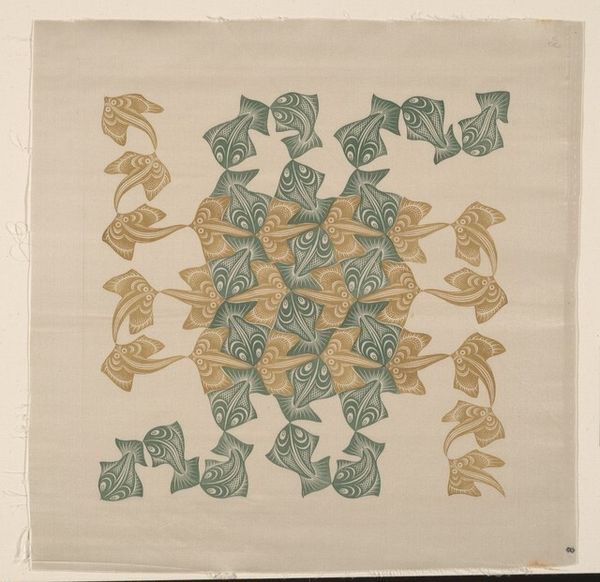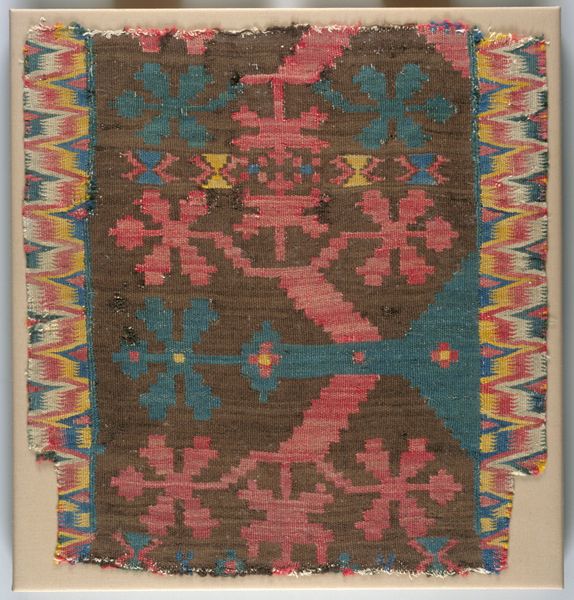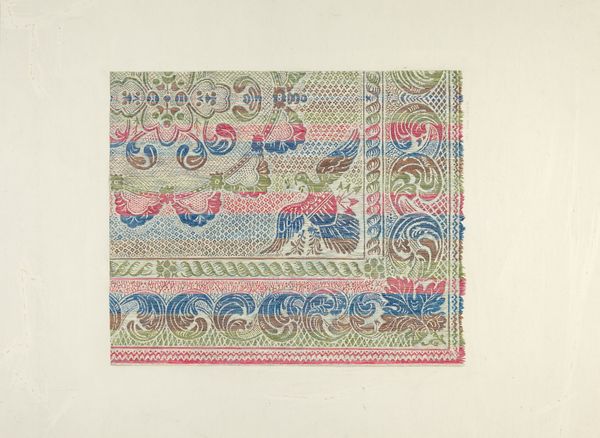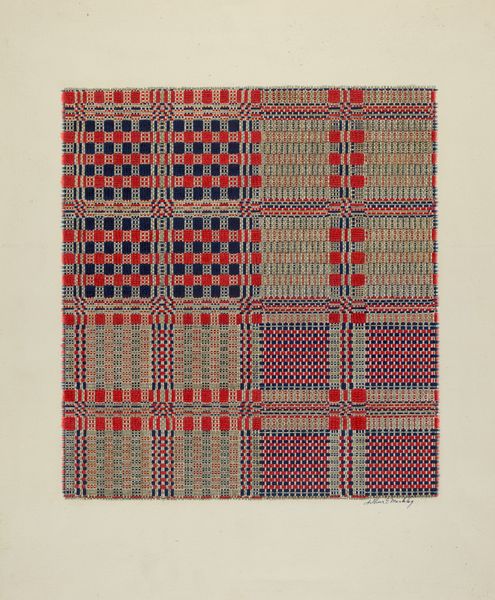
textile
#
folk-art
#
textile
#
folk-art
Dimensions: overall: 35.5 x 26.7 cm (14 x 10 1/2 in.) Original IAD Object: 72" long; 60" wide
Copyright: National Gallery of Art: CC0 1.0
Curator: Here we have William Kieckhofel's "Quilt (Corner)," a drawing from around 1940 that depicts a quilt pattern. It employs textile-like imagery of abstraction rendered in drawing. What are your initial thoughts on the artwork? Editor: It feels so... hopeful. Despite being a "corner," the composition is quite balanced and visually appealing. The bright colors suggest a vibrant spirit and an appreciation of domestic craft during a time that perhaps needed it most. Curator: Absolutely. Quilt patterns, in themselves, carry deep symbolic weight within communities. We find various floral patterns, a chain of triangles, and trailing vines in this work, with red and yellow floral motifs recurring. This can imply shared identity, storytelling, or celebration of milestones within communities through the use of a visual symbolic vernacular. Editor: This brings forth an interesting dialogue when considering its folk art inspirations in the context of its abstraction. Kieckhofel seemingly recontextualizes what could be seen as strictly decorative. The medium—drawing rather than stitched textile—suggests that art can cross typical gender boundaries with folk elements that can function independently of practical purpose or utilitarian constraints. Curator: I agree, there is indeed the duality. The very concept of abstraction becomes accessible and democratized when rendered in this kind of vocabulary. The visual language feels incredibly familiar and approachable, and the textile-drawing becomes representative of accessibility. It carries both collective and deeply personal connotations that evoke memories and narratives—perhaps those passed down generations. Editor: Furthermore, let's not underestimate the political underpinnings in textile arts. When made by marginalized groups, quilting became not only an act of cultural expression but resistance too. The work highlights the intersectional nature of these traditions—as domestic labor became inherently bound with female empowerment during that historical period. Curator: Fascinating to observe how everyday objects when reframed through an artistic lens provide so much symbolic depth and continue carrying social meaning through the times. Editor: A poignant illustration, indeed. William Kieckhofel asks us to question where art begins and where cultural activism might fit in.
Comments
No comments
Be the first to comment and join the conversation on the ultimate creative platform.
